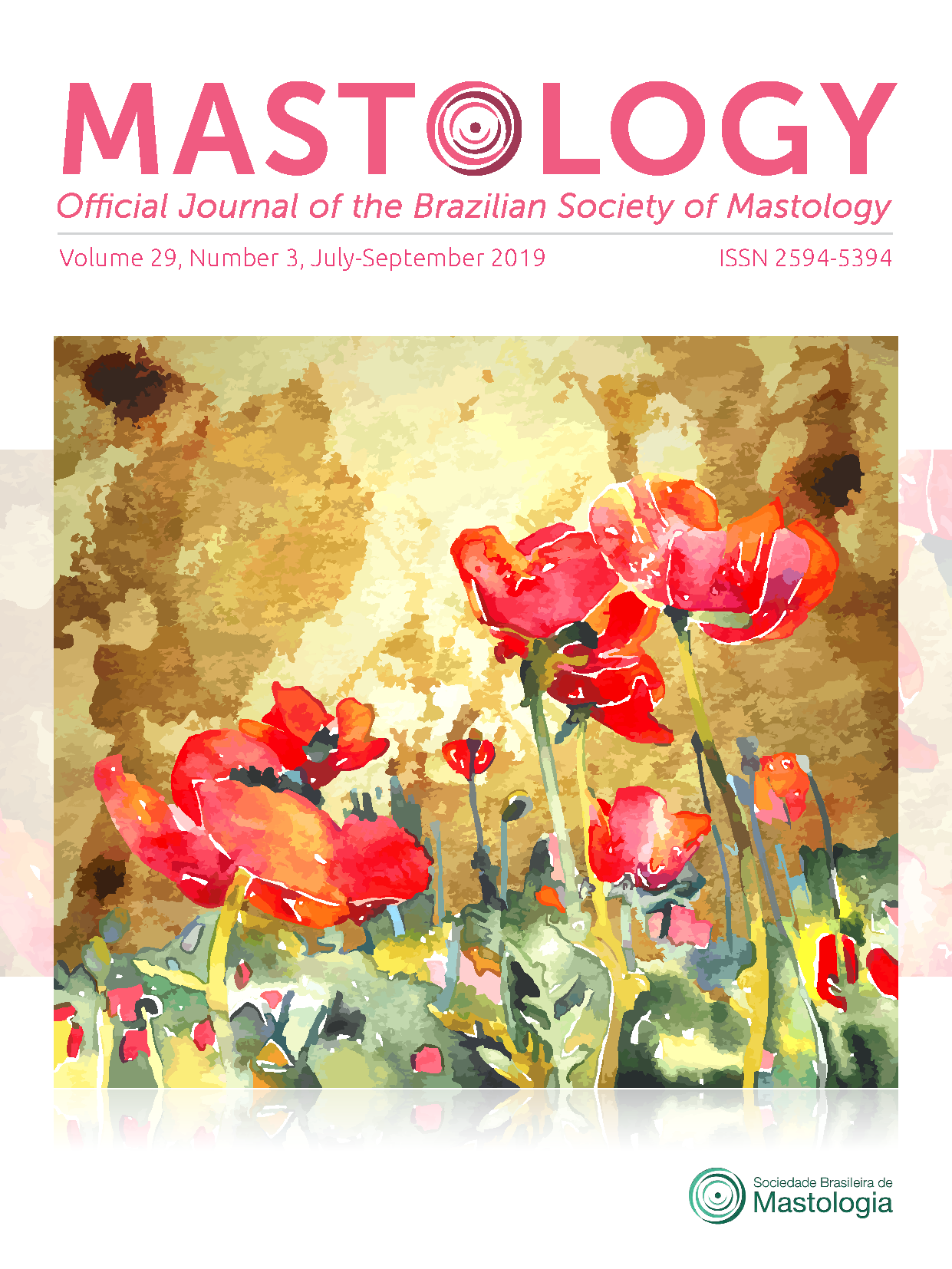PET/CT com 18F-FDG ajuda a identificar carcinoma oculto em paciente com múltiplos nódulos mamários na ressonância magnética
Palavras-chave:
tomografia por emissão de pósitrons, fluordesoxiglucose F18, imagem por ressonância magnética, neoplasias da mamaResumo
Paciente do sexo feminino, de 52 anos, com diagnóstico de carcinoma invasivo na mama esquerda e linfonodo metastático na axila direita. A ressonância magnética mostrou múltiplos nódulos mamários bilaterais, com quatro biópsias anteriores negativas na mama direita. 18F-FDG PET/tomografia computadorizada (CT) foi realizado em decúbito ventral, dedicada à avaliação das mamas, demonstrou aumento da captação em um nódulo na mama direita. Depois de fusão das imagens do PET/CT com a ressonância magnética (RM) e ultrassonografia direcionada, esta lesão foi submetida à biópsia percutânea, que confirmou um segundo carcinoma invasivo na mama direita, alterando o tratamento. Este é um exemplo de como os dispositivos dedicados de PET/RM podem melhorar a avaliação das lesões mamárias selecionadas.
Downloads
Referências
Groheux D, Cochet A, Humbert O, Alberini JL, Hindie E, Mankoff D. 1⁸F-FDG PET/CT for Staging and Restaging of Breast Cancer. J Nucl Med. 2016;57(Suppl. 1):17S-26S. https://doi.org/10.2967/jnumed.115.157859
Garcia JR, Perez C, Bassa P, Capdevilla L, Ramos F, Valenti V. 18F-FDG PET/CT in the Staging and Management of Breast Cancer: Value in Disease Outcome and Planning Therapy. Clin Nucl Med. 2017;42(3):191-2. https://doi.org/10.1097/RLU.0000000000001512
Dong A, Wang Y, Lu J, Zuo C. Spectrum of the Breast Lesions With Increased 18F-FDG Uptake on PET/CT. Clin Nucl Med. 2016;41(7):543-57. https://doi.org/10.1097/RLU.0000000000001203
Moy L, Ponzo F, Noz ME, Maguire GQ Jr., Murphy-Walcott AD, Deans AE, et al. Improving specificity of breast MRI using prone PET and fused MRI and PET 3D volume datasets. J Nucl Med. 2007;48(4):528-37.
Garcia-Velloso MJ, Ribelles MJ, Rodriguez M, Fernandez-Montero A, Sancho L, Prieto E, et al. MRI fused with prone REFERENCES FDG PET/CT improves the primary tumour staging of patients with breast cancer. Eur Radiol. 2017;27(8):3190-8. https://doi.org/10.1007/s00330-016-4685-8
Magometschnigg HF, Baltzer PA, Fueger B, Helbich TH, Karanikas G, Dubsky P, et al. Diagnostic accuracy of (18)F-FDG PET/CT compared with that of contrast-enhanced MRI of the breast at 3 T. Eur J Nucl Med Mol Imaging. 2015;42(11):1656-65. https://doi.org/10.1007/s00259-015-3099-1
Bitencourt AG, Lima EN, Chojniak R, Marques EF, Souza JA, Andrade WP, et al. Can 18F-FDG PET improve the evaluation of suspicious breast lesions on MRI? Eur J Radiol. 2014;83(8):1381- 6. https://doi.org/10.1016/j.ejrad.2014.05.021
Moy L, Noz ME, Maguire GQ Jr., Melsaether A, Deans AE, Murphy-Walcott AD, et al. Role of fusion of prone FDGPET and magnetic resonance imaging of the breasts in the evaluation of breast cancer. Breast J. 2010;16(4):369-76. https://doi.org/10.1111/j.1524-4741.2010.00927.x
Downloads
Publicado
Como Citar
Edição
Seção
Licença
Copyright (c) 2019 Almir Galvão Vieira Bitencourt, Luciana Graziano, Carla Tajima, Fabiana Baroni Makdissi, Eduardo Nóbrega Pereira Lima

Este trabalho está licenciado sob uma licença Creative Commons Attribution 4.0 International License.







